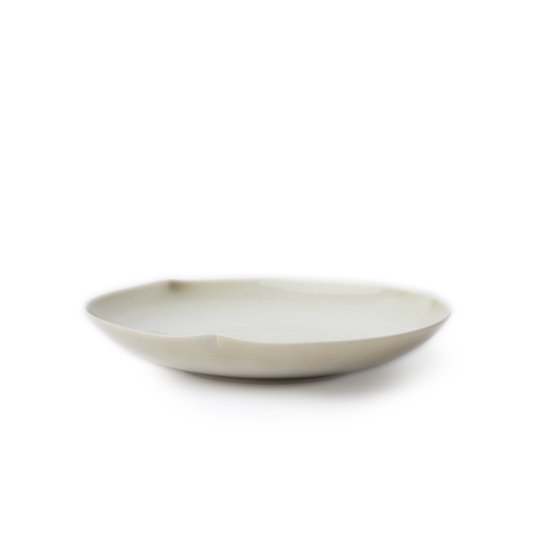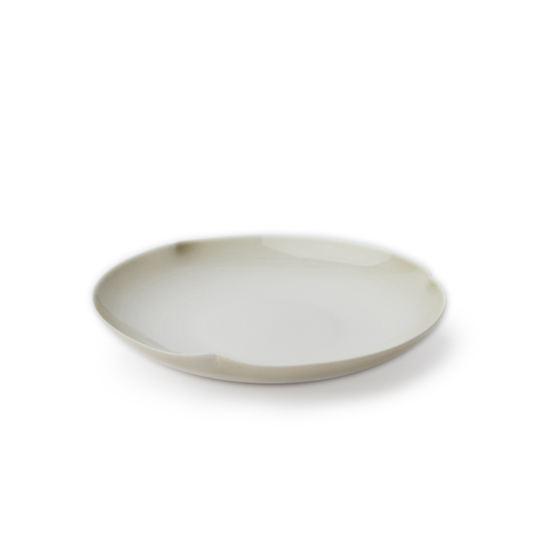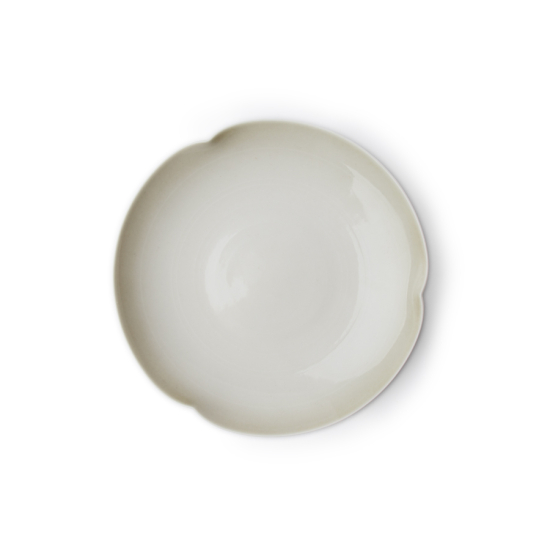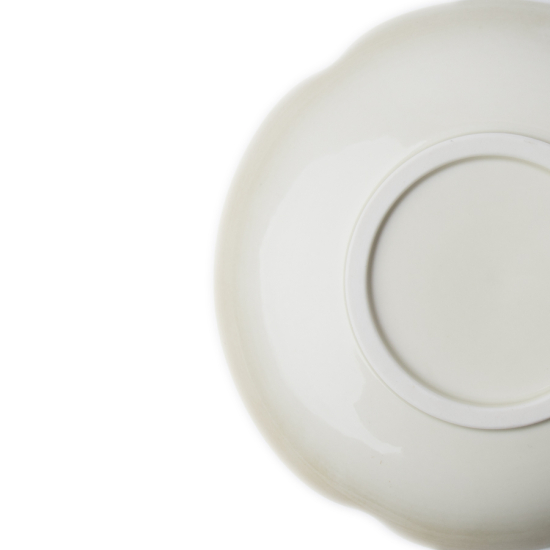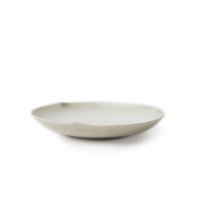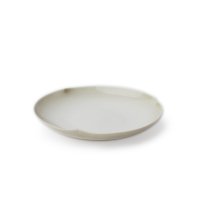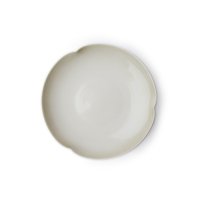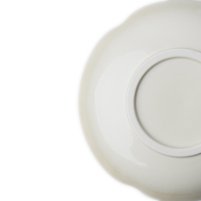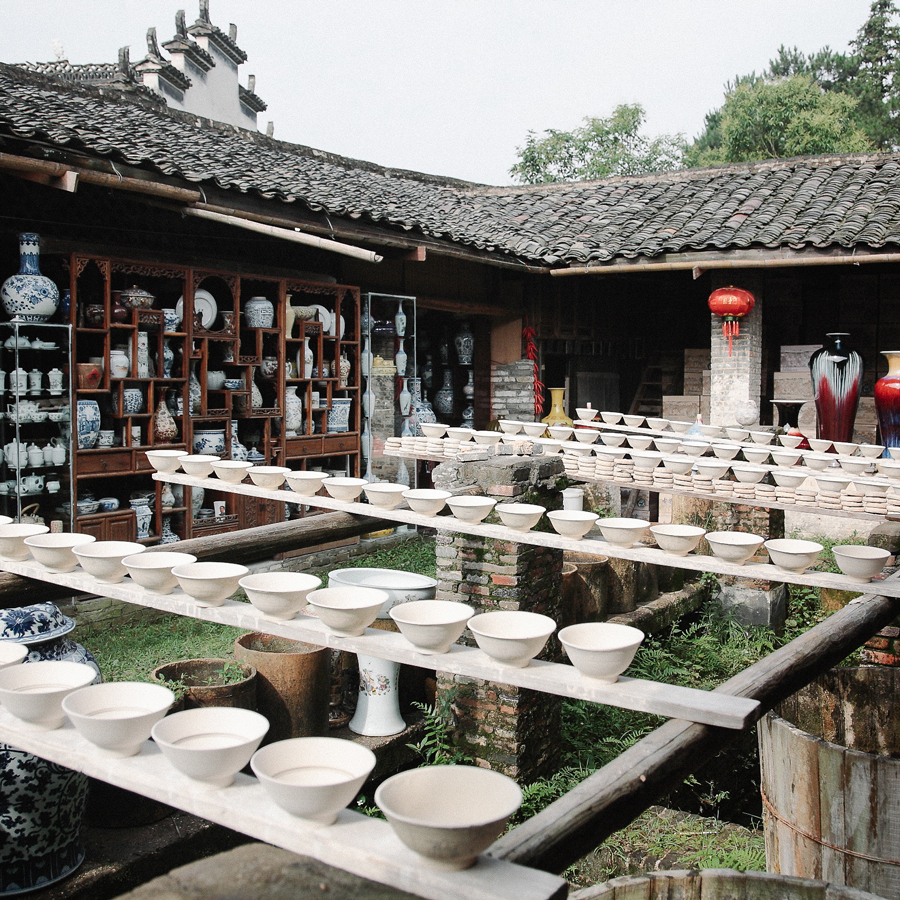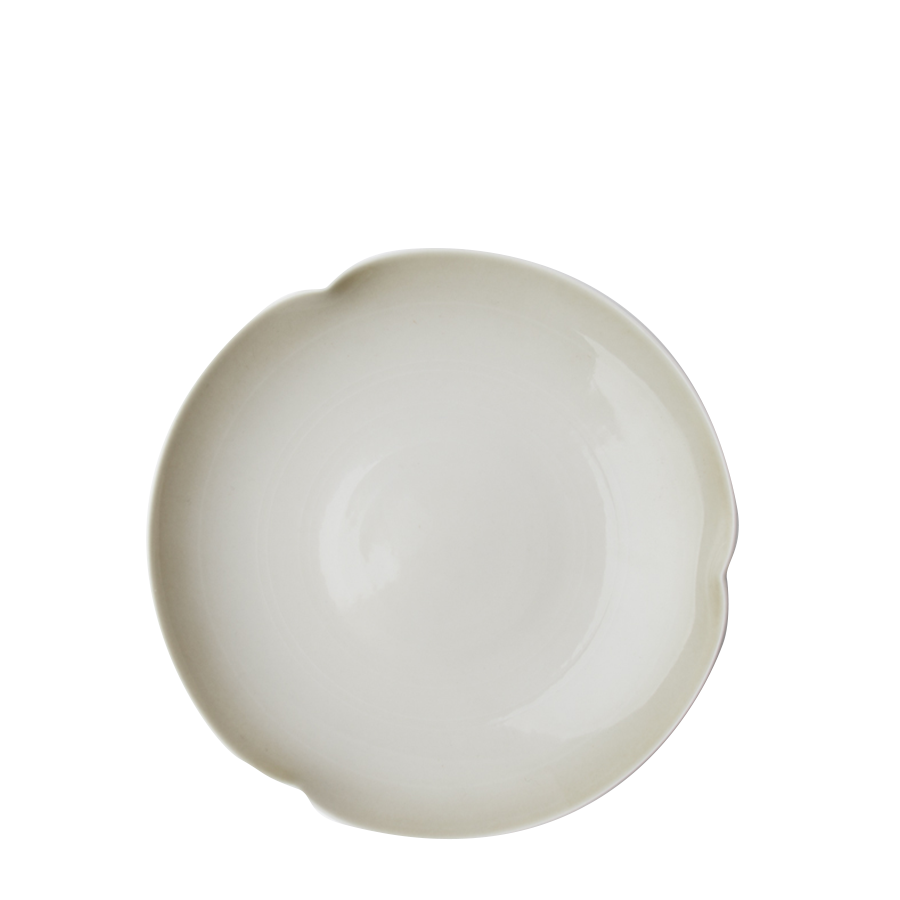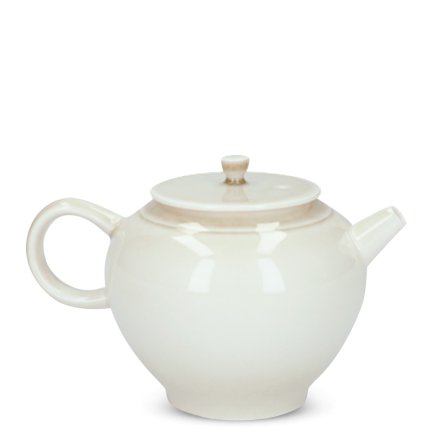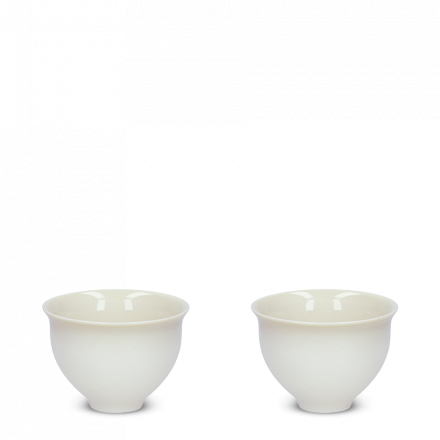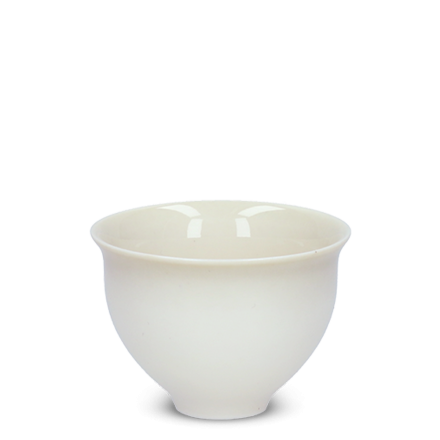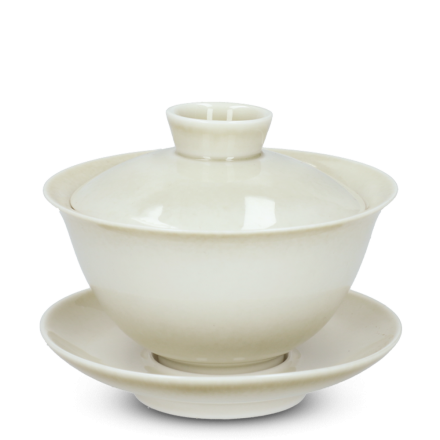Revered for its likeness to jade, celadon ceramics, also known as greenware, have been produced in China as far back as the Shang dynasty (1600-1046 BC). Traditional celadon glazes contain iron oxide, which transform into various lustrous shades of green – from deep olive to the palest blue- and grey-greens – when fired at high temperatures in a reduction oven. Celadon wares dominated the East Asian ceramic landscape for centuries, reaching its peak during the Song Dynasty (960-1279), after which blue-and-white Jingdezhen porcelain took pride of place.
Hu Cheng
Celadon
Jingdezhen
SKU
7241
Elegant Chinese Hu Cheng tea tray with a classic off-white celadon glaze. Handcrafted in Jingdezhen: the legendary birthplace of porcelain, this practical Hu Cheng can also be used as a plate for serving teatime treats.
| Product | Hu Cheng plate |
|---|---|
| Origin | Jingdezhen, Jiangxi, China |
| Dimensions | Ø16.5cm |
| Material | Porcelain |
| Glaze | Celadon ash glaze |
Each item is handmade and unique therefore measurements are approximate
In stock



